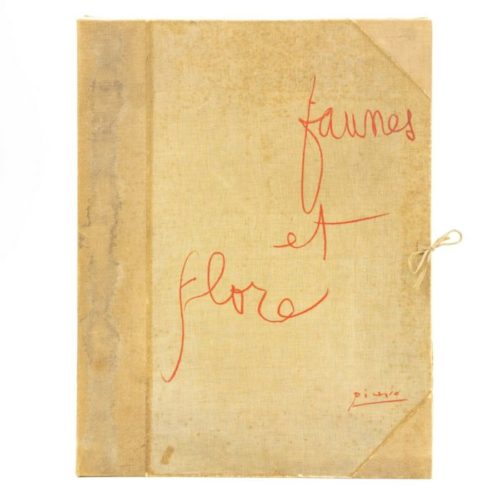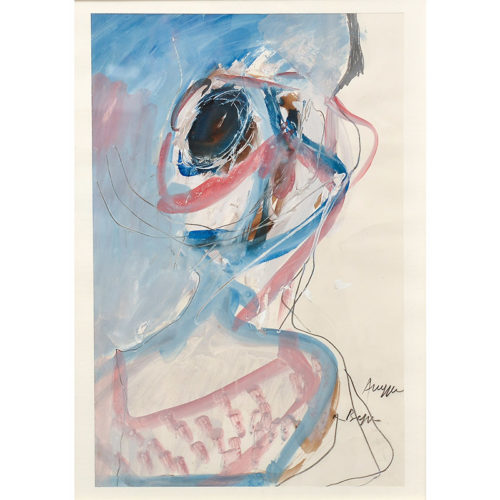-
 "Faunes et Flore d'Antibes" - Edition 46/175 - "Au Pont des Arts". Original album from 1960, containing 7 colour lithographs. Printed by Daniel Jacomet under the supervision of Picasso, Paris. Introduction by Jaime Sabartes, New York Graphic Society - Au Pont Des Arts, Paris, 1960. The Portfolio reproduces 7 paintings on paper by Pablo Picasso, from the series: "La joie de vivre", Antibes August/September 1946, plus the frontispiece that was specially designed by Picasso for this edition. Printed on paper marked Arches and preserved in the original linen folder. The prints are reproduced in the original format of the paintings, and the dimensions of the folder are: H 65 x W 50 cm. The linen folder and the prints are in very good condition. One hundred and seventy-five numbered copies, this being 46 of 175. Period: 1960 Measurements: H 65 x W 50 cm
"Faunes et Flore d'Antibes" - Edition 46/175 - "Au Pont des Arts". Original album from 1960, containing 7 colour lithographs. Printed by Daniel Jacomet under the supervision of Picasso, Paris. Introduction by Jaime Sabartes, New York Graphic Society - Au Pont Des Arts, Paris, 1960. The Portfolio reproduces 7 paintings on paper by Pablo Picasso, from the series: "La joie de vivre", Antibes August/September 1946, plus the frontispiece that was specially designed by Picasso for this edition. Printed on paper marked Arches and preserved in the original linen folder. The prints are reproduced in the original format of the paintings, and the dimensions of the folder are: H 65 x W 50 cm. The linen folder and the prints are in very good condition. One hundred and seventy-five numbered copies, this being 46 of 175. Period: 1960 Measurements: H 65 x W 50 cm
